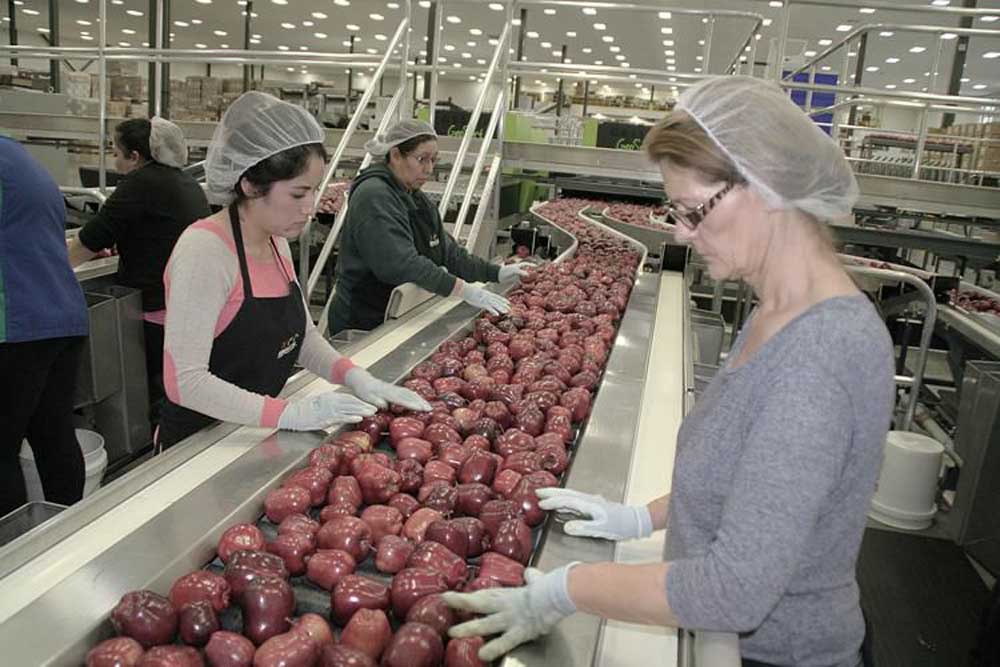Japan reduces tariffs on apples, almonds, cherries
Published 12:00 am Thursday, October 31, 2019

- Workers sort Red Delicious apples at McDougall & Sons Inc., in Wenatchee, Washington. Japan will reduce its tariffs on some tree fruit but phytosanitary rules remain a concern.(Dan Wheat/Capital Press, File)
YAKIMA, Wash. — The U.S.-Japan Trade Agreement reduces tariffs on U.S. apples, almonds and cherries but does not address phytosanitary restrictions.
The agreement, signed Oct. 7, cuts a 17% tariff on apples to 11.4% on Jan. 1 and to 10.2% on April 1. It then drops the rate further over the following eight years until it expires.
“It’s a large amount so getting rid of it is a positive, but it doesn’t mean the market is wide open,” said Mark Powers, president of Northwest Horticultural Council in Yakima.
Phytosanitary barriers must be addressed in the next phase to make the deal meaningful, he said. Phytosanitary barriers prohibit U.S. pears and a 5% tariff does not change, he said.
Stemilt Growers, in Wenatchee, Washington, is the only company shipping small amounts of apples to Japan. It does it at a loss because of the cost of phytosanitary protocols, including cold storage and fumigation, but is banking on it building Japanese consumer demand for Washington apples.
The agreement eliminates a 2.4% tariff on in-shell and kernel almonds, eliminates a tariff on roasted almonds and could lead to similar help for almond meal, flour and paste, according to Julie Adams, vice president of the Almond Board of California in Modesto.
“Over the last few years, we’ve seen an average shipment growth of 5%. With our ongoing promotional efforts combined with tariff reduction, we would expect to see that or greater shipment increase,” Adams said.
Japan is the fifth largest export market for California almonds, buying 81 million pounds in 2018-19, up 3% from the previous year and valued at $255 million.
Japan’s 8.5% tariff on cherries will be reduced to 3.4% on Jan. 1 and 2.5% on April 1, 2020. On April 1 over the subsequent three years it goes to 1.7%, 0.8% and then zero.
“Any decrease in the tariff is good. It minimizes our landed cost but doesn’t change the commercial situation significantly. Unfortunately, China has been a declining market for cherries as they increase their own production,” Powers said.
B.J. Thurlby, president of Northwest Cherry Growers in Yakima, has said Japanese domestic production has quadrupled over the past decade while imports of U.S. cherries have declined.
Northwest cherry exports to Japan average about 180,000, 20-pound boxes worth $7 million to $9 million annually, he said. That’s just 2.1% of Northwest cherry exports, far behind exports to Canada, China, South Korea and Taiwan.






